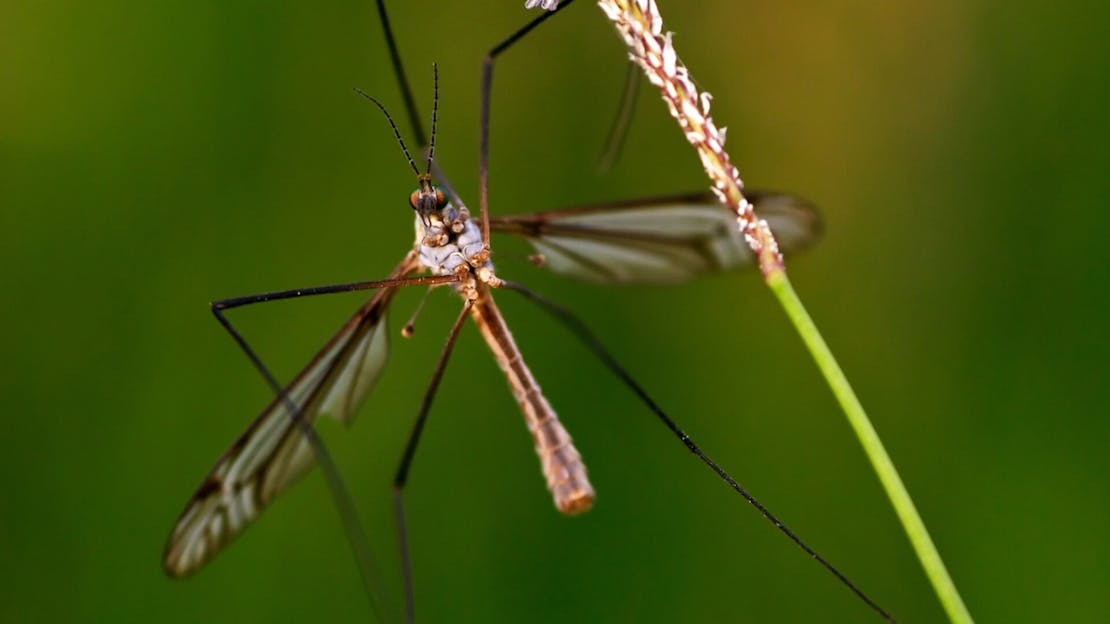
Crane Fly & Leatherjackets
The Crane Fly or Daddy Long-legs is the adult and the Leather Jacket is the larvae or grub. Only the leather jacket grubs cause damage to your lawn
The Crane Fly or Daddy Longlegs is the adult and the Leather Jacket the larvae. It is only the larvae that cause damage to your lawn and are a delicious treat for the local wildlife!
If you see crane fly or leather jackets don’t panic and go into extermination mode. Most lawns and gardens have a healthy number living in and around them without any discernible damage. They are part of the natural balance and make your lawn a more interesting and rewarding place. Please also refrain from pulling their legs off!
Identification
If you have a problem you will notice one of three things:
- Adult crane fly can be seen from late July to September. If you see a lot then be prepared for possible problems in the following spring
- Patches of lawn dry severely and the turf can be pulled or peeled up. Larvae are 2 to 3cm long on or just below the soil surface
- Lawn damage as the wildlife starts ripping and pulling grass, moss and thatch out of the lawn. Once again look for larvae on or just below the soil surface

If you suspect a problem peel back several patches of turf and if you have more than about 5 grubs per square foot then damage will more than likely occur. As there is no pesticide now available scarification, aeration and over seeding will be required after an attack to reduce the population and repair the lawn.
Birds will find them a tasty treat and may well invade the lawn in search of them. They will do little damage apart from pulling up moss so let them get on with it and clear the lawn of the root eating grubs.
If you do see grubs and they are a creamy colour with an orange brown head and have legs then you have chafers not leather jackets!
Nematodes
These are beneficial insect-parasitic roundworms and in the hands of the professional can control the larvae. In the hands of the amateur their use is problematic as follows:
- They need to be stored correctly
- Applied by soil injection, micro-hollow tining or sprayed after slitting
- Applied at the correct stage of grub development
- A certain level of soil moisture and temperature must prevail
- Use of a wetting agent is common to assist the nematodes to move throughout the soil
- Nematodes need to find grubs upon which to parasitize otherwise the nematodes die
- Nematodes are susceptible to ultra-violet light and dessication so need to be introduced early morning or late evening
Given up yet?